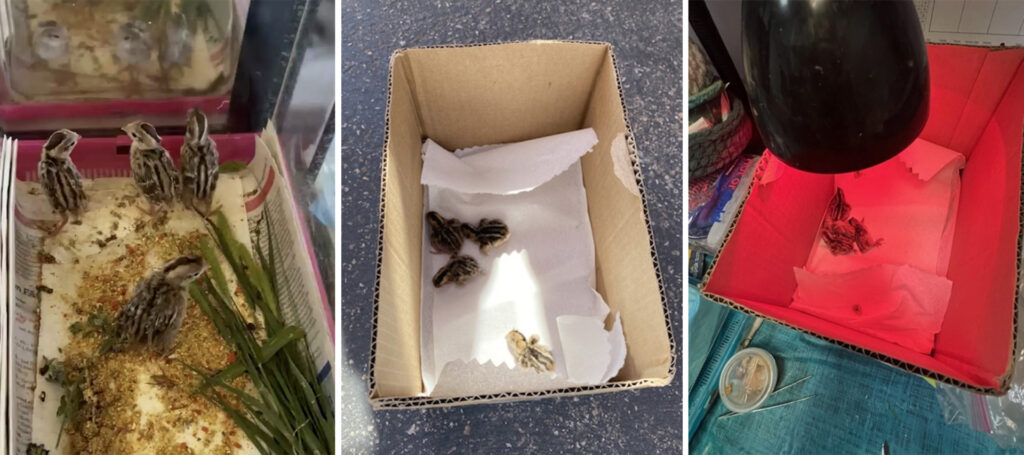
What to do if you find an injured or trapped animal in Kayenta?
Kayenta Homes & Properties, located in the heart of the Art Village, often gets asked to assist in “Everything Kayenta”. Our team is always happy to help. From wayward irrigation lines, escaped pets, directory assistance, and most recently, quail chick rescue.
What to do if you find an injured or trapped animal in Kayenta?
This question came up recently when a well-meaning person left a box of very young quail chicks in front of Datura Gallery.
Although we do not know the circumstances behind how these chicks ended up in the box at the gallery, I think it’s safe to assume that someone had kind intentions. They likely were trying to save these tiny vulnerable creatures from certain death and felt the quail parents were not able to care for them. Possibly the parents were killed, leaving the chicks behind, we do not know. Lucky for the chicks, a woman came by and offered to immediately take them to a rehabilitation center in Cedar City. Under the care of Enoch Wildlife Rescue (www.gowildlife.org) three of the four survived and were later joined by two more from up North
Enoch Wildlife Rescue was founded in 1997 in Cedar City. It is a 501c3 non-profit organization dedicated to wildlife rescue, rehabilitation, and education. The video and photos below show the founder on a rescue and release of a young hawk, and the Kayenta chicks being cared for.
As I sat and wrote this article, I had a call from Ivins Police about more trouble with chicks. A couple witnessed several quail chicks fall into a storm drain in the parking lot here.
They watched the chicks cross with their parents and quickly vanish through the drain slots. The quail parents were clearly panicked, so police were called, then Kayenta Homes & Properties, and I called David. He is the ever-helpful Kayenta “go-to guy”. It is so wonderful to live in an area where the police come out in 109 degrees to help rescue a few quail chicks. The innovative couple was able to remove one of the drain covers and devise a ramp for the parents to head down and complete the rescue. Mother knows best in this situation, as she quickly climbed down the ramp, and guided the chicks to safety.
So what do you do if you come across chicks that appear to be abandoned?
Enoch Wildlife Rescue says it’s best to leave the chicks where they are. Most often the parent will return, and they often leave chicks unattended. Do not feed them or give them water, this could be fatal. Call the rescue center or one of the numbers listed below for instructions.
Who to call in Ivins
The best numbers to call for injured or orphaned animals would probably first be:
- Ivins Animal Services 435-628-1049
- DWR (Division of Wildlife Resources) at 435-879-8694
- Urban Wildlife Hotline at 435-680-1461
- After hours the best number would be Ivins Dispatch at 435-634-5730. These guys can often remove snakes too.
- Kurt VanLeeuwen 435-705-1442. He is our local Kayenta snake expert, and if he is available can help, including the removal and relocation of rattlesnakes. He coordinates his efforts with the Red Cliffs Desert Reserve.
Tortoise
If someone finds a Mojave Desert Tortoise it is best to leave it alone unless they are in immediate danger. If they need to be moved off the road, pick them up, keep them low to the ground, and move them to the other side they were heading for. They are a threatened species and the Red Desert Cliffs Desert Reserve usually likes to get a report when they are found out of the reserve. The folks there like it if the person finding the tortoise would take a picture and text it to them. That gives them the GPS location. Call them first at 435-301-7430 to get the best number to text too.
Gila Monster
If someone finds a Gila Monster, they should feel lucky. They typically only come out in the spring to eat and mate. The rest of their time is spent underground. They are venomous but the venom is not considered significant to humans and they are very docile. However, let them be, and DO NOT try to pick one up. Their bite is extremely painful. They are considered a near-threatened species.


